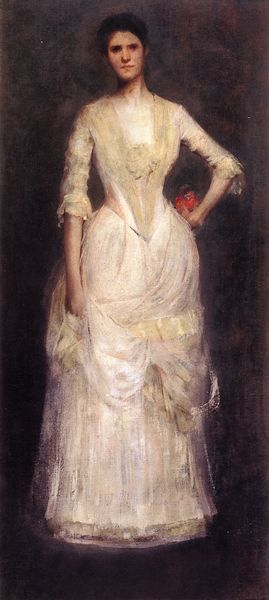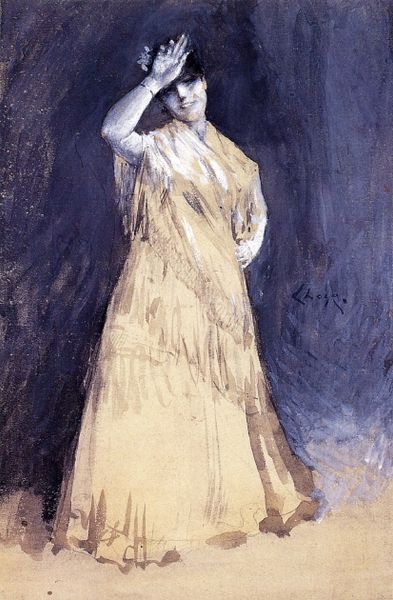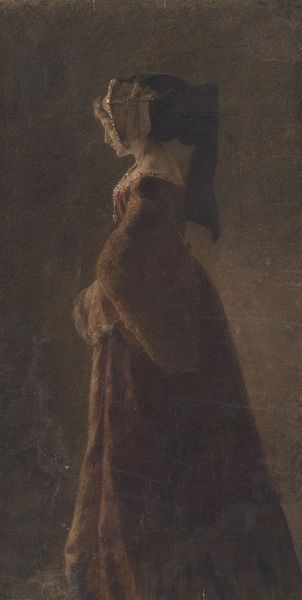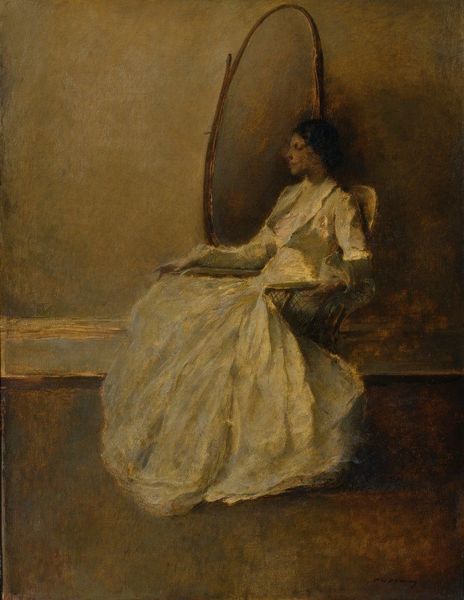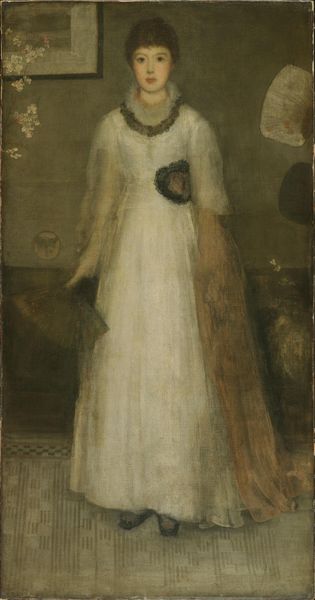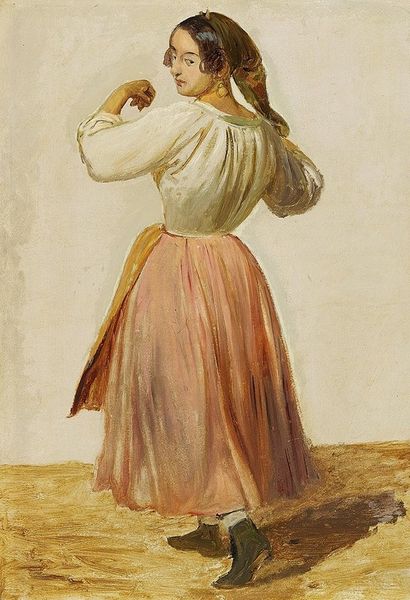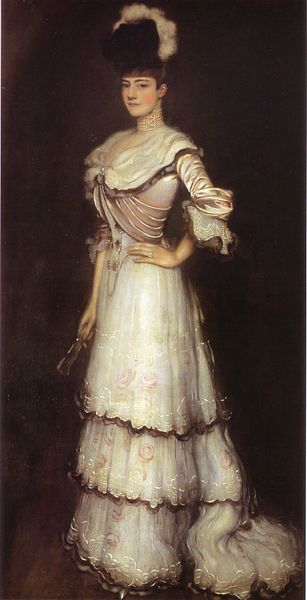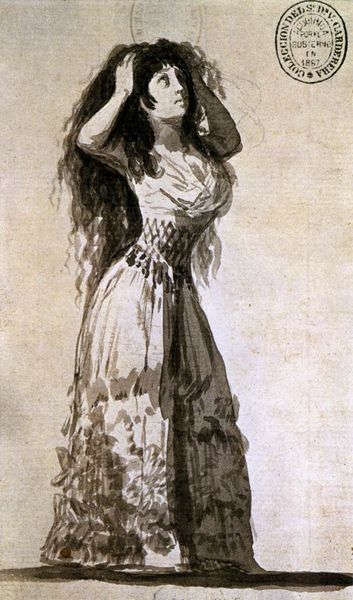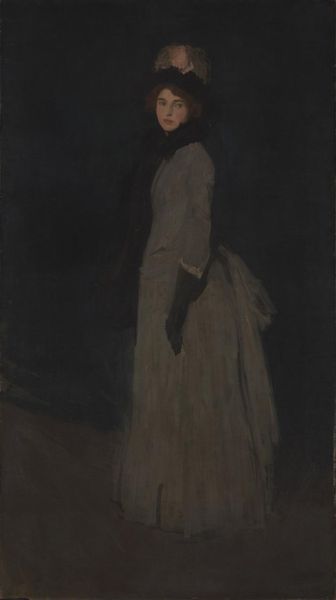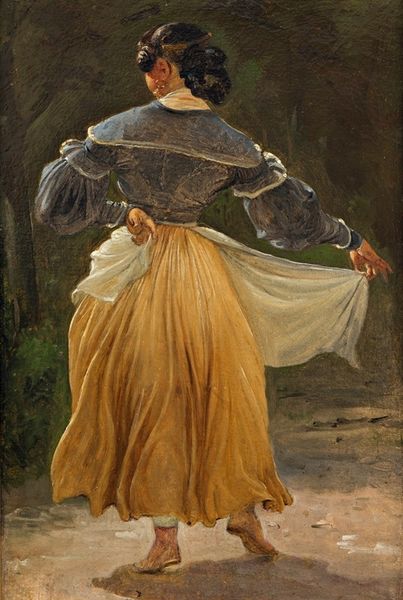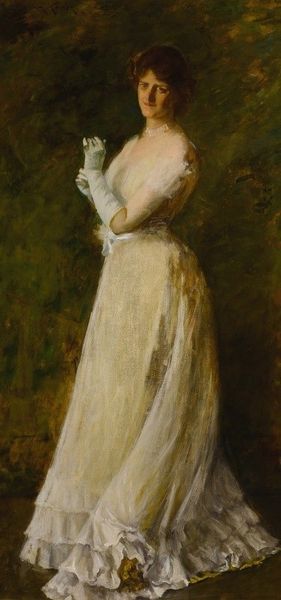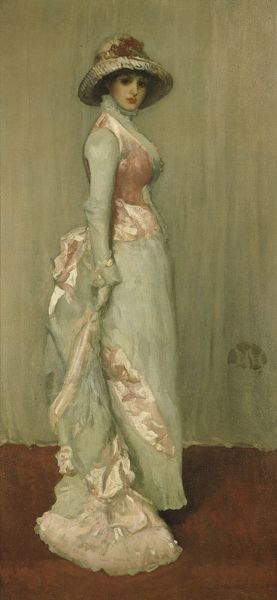
painting, oil-paint
#
portrait
#
painting
#
impressionism
#
oil-paint
#
figuration
#
genre-painting
Copyright: Public domain
Editor: This is William Merritt Chase's "A Madrid Dancing Girl" from 1886, done in oil on canvas. It's really captivating! The contrast between the figure's illuminated dress and the shadowy background creates a strong visual focus. What do you see in this piece, formally speaking? Curator: Observe the composition closely. The figure's placement within the frame adheres to classical principles, but the loose brushwork lends it an Impressionistic air. Notice how Chase employs a limited palette – primarily whites, yellows, and browns – to unify the image. This artistic choice, devoid of vibrant colour, emphasizes tonal relationships and highlights form through value contrasts. Editor: The way the light interacts with the dress and the shawl, it's amazing how he achieved that effect. Why do you think Chase chose these techniques? Curator: These are technical observations, correct, but to what end? By emphasizing surface texture through visible brushstrokes, Chase draws attention to the painting’s materiality. This calls attention to the constructed nature of the artwork itself. Is he referencing Spanish masters with this restrained palette and subject? How do these formal devices evoke something other than literalness? Editor: It's interesting, I see how the focus on composition and form creates a self-referential quality, which invites you to appreciate the artistry more than the subject matter. It feels more about the act of painting itself. Curator: Precisely. Chase masterfully uses formal elements to transcend mere representation. Consider the rhythm of the brushstrokes and the placement of light; do they perhaps suggest an interpretive equivalent of movement, an echo of dance itself? Editor: That's a completely different lens than what I normally use to view art! Thank you, I will remember that next time I am facing artwork. Curator: A formal approach enables profound insight. Keep in mind that it provides a crucial framework for understanding the complexities of visual expression in artworks.
Comments
No comments
Be the first to comment and join the conversation on the ultimate creative platform.
